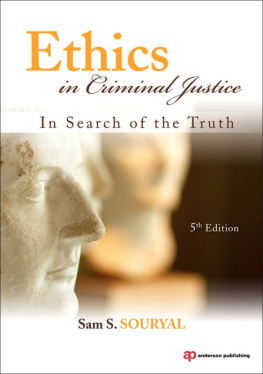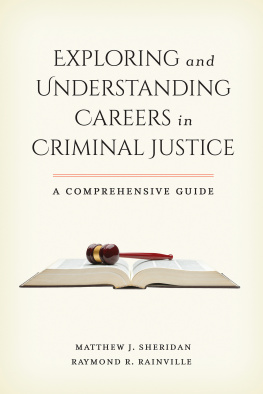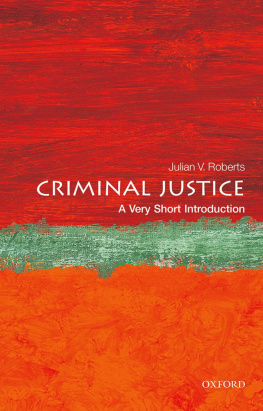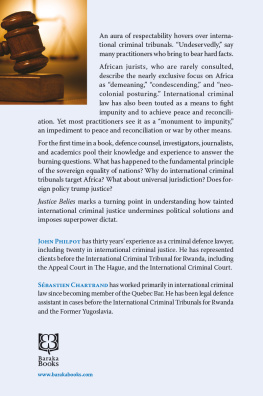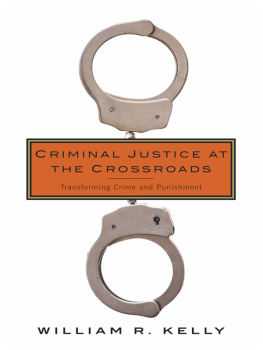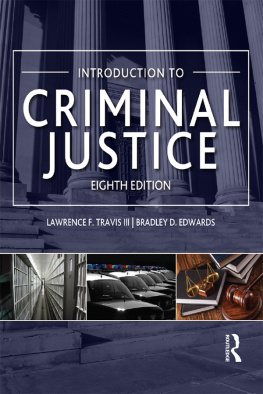
Understanding Criminal Justice
Few subjects provoke as much public fascination and political concern as crime, criminality, criminology, and criminal justice policy and practice. Understanding Criminal Justice seeks to provide students with a critical introduction to the range of theoretical, policy and operational issues faced by the criminal justice system in England, Wales, Scotland and Northern Ireland at the beginning of the twenty-first century.
It anticipates little or no prior knowledge of criminal justice, and seeks to provide an introduction to the area. This critical textbook provides both a thorough overview of the procedures central to the workings of the criminal justice system and a distillation of the topical debates that surround it. It outlines the political and historical context, detailing key procedures and challenging students to engage with current debates. Containing chapters on policing, prosecution, community justice and alternative modes of justice, this text provides a comprehensive coverage of the key topics included within undergraduate criminology programmes at an introductory level.
Written in a lively and accessible style, this book will also be of interest to general readers and practitioners in the criminal justice system.
Azrini Wahidin is a Reader in Criminology and Criminal Justice in the School of Sociology, Social Policy and Social Work, Queens University Belfast, where she teaches criminology and criminal justice. She has written extensively in the field of older offenders in the criminal justice system and women in prison. Her books include: Older Women in the Criminal Justice System: Running Out of Time (Jessica Kingsley, 2004), Foucault and Ageing (Nova Press, 2005), Understanding Prison Staff (Willan, 2007) and Ageing, Crime and Society (Willan, 2006). Her current research interests include the resettlement needs of young offenders and the experiences of Republican political prisoners.
Nicola Carr is a lecturer in the School of Sociology, Social Policy and Social Work, Queens University Belfast, where she teaches social work law and practice in the criminal justice system. She is a qualified probation officer and has worked with both adults and young people in this context. Her research interests include community sentences, crime and criminal justice in the media, and narrative approaches in the study of offending behaviour.
Understanding
Criminal Justice
A critical introduction
Azrini Wahidin
and Nicola Carr
First published 2013
by Routledge
2 Park Square, Milton Park, Abingdon, Oxon, OX14 4RN
Simultaneously published in the USA and Canada
by Routledge
711 Third Avenue, New York, NY 10017
Routledge is an imprint of the Taylor & Francis Group, an informa business
2013 Azrini Wahidin and Nicola Carr
The right of Azrini Wahidin and Nicola Carr to be identified as authors of
this work has been asserted by them in accordance with sections 77 and 78
of the Copyright, Designs and Patents Act 1988.
All rights reserved. No part of this book may be reprinted or reproduced or
utilised in any form or by any electronic, mechanical, or other means, now
known or hereafter invented, including photocopying and recording, or in
any information storage or retrieval system, without permission in writing
from the publishers.
Trademark notice : Product or corporate names may be trademarks or
registered trademarks, and are used only for identification and explanation
without intent to infringe.
British Library Cataloguing in Publication Data
A catalogue record for this book is available from the British Library
Library of Congress Cataloging-in-Publication Data
Wahidin, Azrini, 1972-
Understanding criminal justice: a critical introduction/Azrini Wahidin
and Nicola Carr.
p. cm.
1. Criminal justice, Administration of-Great Britain-Case studies.
I. Carr, Nicola. II. Title.
HV9960.G7W34 2012
364.941-dc23 2012025646
ISBN: 978-0-415-67021-0 (hbk)
ISBN: 978-0-415-67022-7 (pbk)
ISBN: 978-0-203-08352-9 (ebk)
Typeset in Times New Roman by
Swales & Willis Ltd, Exeter, Devon
Illustrations
Figures
| 1.2 |
| 2.1 |
| 3.1 |
| 4.1 |
| 4.2 |
| 4.3 |
| 5.1 |
| 5.2 |
| 5.3 |
| 7.1 |
| 7.2 |
| 7.3 |
Tables
Boxes
| Box 1.1 |
| Box 1.2 |
| Box 2.1 |
| Box 2.2 |
| Box 2.3 |
| Box 2.4 |
| Box 2.5 |
| Box 2.6 |
| Box 2.7 |
| Box 3.1 |
| Box 4.1 |
| Box 4.2 |
| Box 4.3 |
| Box 5.1 |
| Box 7.1 |
| Box 7.2 |
| Box 8.1 |
| Box 8.2 |
| Box 8.3 |
| Box 9.1 |
Acknowledgements
In writing a book such as this special thanks go to Nicola Hartley, Tom Sutton and Jules Willan for their support throughout this project. Considerable thanks are also due to the anonymous referees for their invaluable suggestions, which have enriched the final product.
We are grateful to the following for permission to reproduce copyright material: Chapter 1, Figure 1.1, Hazards magazine, permission granted by Jawad Qasrawi; Chapter 4, Figure 4.1, UK court structure, permission granted by the UK Supreme Court; Chapter 5, Figure 5.3, offender management map, permission granted by National Offender Management Service (NOMS); Chapter 6, Table 6.2, countries with the most prisoners, permission granted by Helen Fair, The International Centre for Prison Studies; Chapter 7, Figure 7.3, Zahid Mubarek photo, permission granted by Imtiaz Amin, Zahid Mubarek Trust; Chapter 8: Restorative justice case study, permission for use granted by Ray and Vi Donovan (www.chrisdonavantrust.org) and Chris Igoe: Restorative Justice Council.
1 What is crime?
Key issues
How do we define crime?
Is something criminal because a legal sanction against it exists?
How do we count crime?
Introduction
What is crime? This is not an easy question to answer because of the number of different meanings associated with the word crime: crime is a social construction and thus is historically and culturally specific, and embedded in the morality and social norms of that particular society (Bottomley, 1979). We all presume we know what crime is based on commonsense understandings and our own personal experiences; the influence and role of the mass media on defining crime, the role of politicians in shaping understandings of crime and its effects on our everyday lives. For many the concept of crime is linked to our stereotypes of criminals as dangerous others. However, many crimes take place in the home by people we know. We are more likely to be physically and sexually assaulted by family members than strangers (Davies et al ., 2007), and we can be harmed by environmental pollution and unsafe working environments (Tombs & Williams, 2008). A study of crimes of everyday life (Karstedt & Farrall, 2006) found that those who saw themselves as respectable and law abiding citizens didnt consider that failing to pay TV licence fees, making false insurance claims or avoiding paying taxes were crimes. Although all of the above are crimes, which activities are perceived as normal or deviant makes defining crime very difficult.




